Table of contents
The pineapple ( Ananas comosus) is one of the most popular tropical fruits. Aside from its delicious taste, it contains many vitamins, enzymes and minerals when eaten raw . Make sure it is organic .
Use in the kitchen
Ripe pineapples are characterized by a sour-sweet aroma. Depending on the variety, there are differences in size, taste and color. The flesh varies from whitish to deep yellow. 1 The tropical fruit is eaten either fresh as a raw food, cooked or processed into preserves, jam, marmalade, juice, wine or alcohol.
For many, the epitome of summer, freshness and lightness, pineapple can be used in a wide range of dishes. The more well-known ones include toast or Hawaiian pizza, both of which can be prepared vegan. The sweet, creamy cocktail Piña Colada is also associated with the tropical fruit, although the vegan and non-alcoholic version is also impressive (see recipe). The pineapple-coconut combination is particularly popular, although regular consumption of coconut products is not recommended due to the unfavorable fatty acid ratio.
Raw pineapple is often found with other tropical fruits such as bananas or oranges in smoothies (such as the good morning smoothie with pineapple and celery ) or it can be used as an ingredient in salads (such as the Thai rice salad with parsnips, pineapple and ginger ), on grilled skewers, in sweet, sour and spicy soups or in heartier dishes (such as pineapple curry). The latter goes excellently with tofu , lentils , chickpeas , sweet potatoes , cauliflower or mushrooms . As a sweet dessert, the exotic fruit is suitable as compote, preserved in a jar (preserved), as jam, but also in vegan cakes, tarts or simply fresh as a snack or fruit skewer with strawberries , grapes and kiwis . It can also be used as a garnish or as an alternative ingredient in raw vegan pea muesli and pea muesli plus oatmeal .
When processing a raw pineapple, a relatively large amount of waste is generated. However, with a few tips and tricks, you can use as much of the valuable fruit as possible: Place the pineapple on its side on a cutting board and remove the top blossom and the bottom part with a large knife. Stand the pineapple upright and peel it from top to bottom, along the slight curve. Since the sweetest part is directly under the peel, it is worth not cutting off too much of the flesh. Then cut out the remaining brown spots (the so-called pineapple eyes) diagonally. Halve the peeled pineapple, cut each into four pieces and remove the core. Finally, cut the pineapple into bite-sized pieces.
The stalk can also be used. To do this, boil it briefly in water until soft and then puree it finely in a blender with a little pineapple juice. Then pass the fruit puree through a sieve. The resulting puree is perfect for sorbets or cocktails.
Vegan recipe for a raw pineapple and zucchini salad
Ingredients (for 4 people): 1 raw pineapple (organic), 2 zucchini , 1-2 chili peppers (depending on taste and desired spiciness), 4 tablespoons lime juice , 4 teaspoons agave syrup (or less), 5-6 tablespoons rapeseed oil , 4 sprigs of garden herbs (e.g. chervil or marjoram ).
Preparation: Peel the raw organic pineapple and cut into sticks. Wash the two zucchinis and finely slice them. Wash the chili peppers and cut them into thin rings. Put the three prepared ingredients in a bowl. Mix the rapeseed oil with the lime juice and the agave syrup to make a dressing. Put the dressing in the bowl and mix with the other ingredients. Arrange the vegan raw vegetable salad in four bowls and garnish each with a sprig of garden herbs.
Vegan recipe for a non-alcoholic Piña Colada
Ingredients (for 1 glass): 150 ml pineapple juice, 100 ml coconut juice, 50 ml orange juice , pulp of a vanilla pod , 4 tbsp coconut yoghurt (alternatively coconut milk ), ice cubes, pineapple leaves and a piece of fresh pineapple for decoration.
Preparation: Mix the pulp of the vanilla pod with the coconut yoghurt. Mix the pineapple juice, coconut juice and orange juice, beat with a whisk until creamy and mix in the coconut yoghurt (with the vanilla pulp). Pour the vegan, alcohol-free Piña Colada into a glass and finally decorate with ice cubes, pineapple leaves and a piece of fresh pineapple.
Vegan recipes with pineapple (raw) can be found under the note: " Recipes that have the most of this ingredient ".
| Not only vegans or vegetarians should read this: Vegans often eat unhealthily. Avoidable nutritional mistakes . |
Purchasing - Storage
Pineapple is available in conventional and organic quality all year round in supermarkets (such as Coop , Migros , Spar , Aldi , Lidl , Rewe , Edeka , Hofer , Billa ) and in organic supermarkets (such as Denn's Biomarkt and Alnatura ). available. The fruit is available at smaller supermarket chains such as Denner and Volg during selected promotions. In addition to the fresh form, it is also widely available in canned form; although it keeps well, the sugar content is very high.
The freshness of the pineapple can be determined quite easily by looking at it, pressing it and smelling it. The skin of the fruit should be undamaged and the leaves of the crown should appear lush and green. The scaly skin gives way when lightly pressed and individual sepals (the small leaves on the skin) can be pulled out effortlessly. A wonderful scent at the base of the stem also indicates that the fruit is perfectly ripe.
The availability of pineapple (raw) varies depending on the size of the store, catchment area, etc. If you are interested, click on our recorded food prices for the DA-CH countries (above under the ingredient image). There you will find current prices from various supermarkets and their price development.
Storage tips
As long as the fresh fruit has not yet been peeled, it is best to store it either at room temperature (up to two days) or in the cellar at slightly cooler temperatures (up to a week). The absolute minimum temperature is 6 °C. Storage in the refrigerator should therefore be avoided. Once the fruit has been cut open, it can easily be stored in the vegetable compartment of the refrigerator for one or two days wrapped in cling film.
Ingredients - Nutritional values - Calories
What does a pineapple contain? Pineapple (raw) contains 50 kcal per 100 g, which mainly come from carbohydrates. Of the 13 g of carbohydrates per 100 g, 9.8 g are sugar (covers 10.9% of the daily requirement) and 1.4 g are fiber. The fat content is low at 0.12 g/100g, as is the protein content at 0.54 g/100g. 3
What vitamins does a pineapple have? The pineapple vitamins with the highest concentration in the fruit are vitamin C , vitamin B 9 (folate) and vitamin B 6 (pyridoxine) ; the vitamin K content is negligible.
A raw pineapple contains 48 mg of vitamin C (ascorbic acid) per 100 g, which makes up 60% of the daily requirement. Clementine, raw (49 mg/100g) and kumquat (mini orange, dwarf orange) (44 mg/100g) have comparable amounts. The real guava contains almost 5 times as much at 228 mg/100g. 3
The manganese content is 0.93 mg/100g (46% of the daily requirement). This is comparable to that of raw spinach (0.90 mg/100g). Ground ginger powder contains an extremely high amount of manganese at 33 mg/100g, but it is only consumed in small quantities. Among fruits, only muscadine grapes have a higher content at 2 mg/100g. 3
Folate (folic acid) is contained in raw pineapple at 18 µg/100g (9% of the daily requirement). Kumquat (18 µg/100g) and carrots (19 µg/100g) contain a similar amount. Soybeans (375 µg/100g) contain a lot of folate - but these must be cooked before consumption, which reduces the folate content. Spinach also has a higher value at 194 µg/100g, which can be enjoyed in healthy quantities, even raw. 3
The complete ingredients of pineapple (raw), the coverage of the daily requirement and comparison values with other ingredients can be found in our nutrient tables. In the article Nutrients explained you will get a detailed insight into the topic.
Health Benefits
Raw, fresh pineapple is rich in vitamins and contains significant amounts of bioactive compounds, fiber, minerals and phytochemicals.
With its nutrients, the tropical fruit has a variety of positive effects on human health. It reduces the risk of diabetes and cerebrovascular diseases (strokes and diseases of the blood vessels in the brain), regulates emotional stability and strengthens bone growth, improves digestion and contributes to the healing of the intestines and gastrointestinal function, has antimicrobial and anti-inflammatory effects, has an antioxidant effect and monitors the function of the nervous system. 1
In animal experiments, pineapple has also been shown to lower cholesterol and thus prevent possible cardiovascular diseases. 4
The enzyme bromelain contained in pineapple is particularly interesting. It is found in both the stem and the flesh of the fruit, which is why it is called stem or fruit bromelain. Its diverse positive effects have been shown to improve skin problems, as an anticoagulant and painkiller, for cardiovascular diseases, to strengthen the immune system, to reduce stomach problems, to support the contraction of the uterine muscles during labor and, last but not least, as a tumor suppressor. 5
Dangers - Intolerances - Side effects
Although pineapple is not poisonous when ripe, unripe fruits can have a strong laxative effect and be particularly problematic for pregnant women. 6
The well-known phenomenon of tingling on the tongue also comes from bromelain - according to another theory, possibly from pineapple raphides (calcium oxalate crystals) or from a combination of both. 7,20 Since bromelain is a protein-splitting enzyme, it begins to split proteins in the mouth when it comes into contact with the sensitive oral mucosa. This natural process leads to a slight burning sensation in the mouth, but is not a sign of an allergic reaction to pineapple. This effect is said to occur with fresh, raw pineapple that is not yet fully ripe and therefore has more acid. Canned pineapple is more tolerable because the processing and heating process inactivates the enzyme. This also applies to fresh pineapple pieces that are grilled or otherwise heated. 7,20
Use as a recognized medicinal plant
The raw bromelain in pineapples is used both for digestive problems caused by pancreatic diseases and for the treatment of traumatic edema. 8 The German Commission E also recommends Ananas comosus for swelling caused by injuries or operations on the nose and paranasal sinuses. 2
Folk medicine - natural medicine
In folk medicine, pineapple juice is used as a diuretic and to accelerate labor. It is also known as a gargle for sore throats and as a remedy for seasickness. Eating young (toxic) fruits is said to help against intestinal worms or sexually transmitted diseases or even lead to abortions. In Africa, the dried, powdered root is a remedy for edema. The indigenous people of Panama use the leaf juice as a laxative, emmenagogue (a remedy that promotes the onset of menstruation) and vermifuge. 9
Ecological footprint - animal welfare
According to a study by the Institute for Energy and Environmental Research in Heidelberg from 2020, fresh pineapple has a CO 2 footprint of 0.9 kg CO 2 eq/kg in Germany, based on the real transport average. If the fresh pineapple comes by ship, the CO 2 footprint drops to 0.6 kg CO 2 eq/kg. By plane, the value is massively higher at 15.1 kg CO 2 eq/kg. Canned pineapple has an ecological footprint of 1.8 kg CO 2 eq/kg. 10 The amount of water required to produce 1 kg of pineapple is 255 liters, similar to the amount for watermelons (235 liters) or grapefruits (506 liters). 18
The pineapple is one of the eight fruits and vegetables with the greatest impact on biodiversity. The gPDF-eq (global fraction of potentially disappeared species = unit for quantifying the effects on global biodiversity) for the pineapple is 5.35, which puts it in fifth place. 11
Conventional pineapple cultivation relies on extensive use of synthetic pesticides to control pests. A study on the environmental impact of these pesticides and herbicides showed significant negative effects on macroinvertebrates and habitats along rivers; the toxicity of the water also increased continuously. 19
The facts make it clear that eating this tropical fruit, despite its positive health effects, leaves a large ecological footprint. In any case, buying fruit transported by ship is preferable to air freight and, if possible, switching to more seasonal and regional foods such as pears or apples in dishes should be avoided. When shopping, it is also better to buy fruit from organic farming in order to keep the harmful effects of pesticides (used in conventional farming) as low as possible.
Worldwide occurrence - cultivation
Where does the pineapple originally come from? The origin of the pineapple is located in southern Brazil and Paraguay. The indigenous population there domesticated it long before the arrival of the Europeans. Christopher Columbus finally brought the fruit to Europe and thus gave the starting signal for further cultivation areas. 9 Today the fruit is cultivated on pineapple plantations in tropical regions all over the world. There are roughly six groups of pineapple varieties: Cayenne, Queen, Spanish, Extra Sweet Cayenne-Hybrid, Pernambuco, Modilonus and Perolera, with the Smooth Cayenne variety accounting for over 70% of global cultivation. Each of these groups can contain up to 100 varieties. 1
The top 5 producers and exporters from 2016 to 2020 are, in descending order, the Philippines, Costa Rica, Brazil, Indonesia and China. 12
Cultivation - Harvest
A warm climate with temperatures of 24-30 °C is a basic requirement for the pineapple to grow and thrive. Sandy, peaty soil with a pH value of less than 5.5 is ideal. The plant can survive dry periods or extreme heat well. Since the pineapple can also grow in the shade, it is often planted under mango trees or cashew trees as well as palm trees. Drip irrigation is sufficient as it requires very little water. After two to three years, the first fruits can be harvested, with more fruits often being grown from the side shoots. A single pineapple plant can therefore produce two to three fruits. 13
The pineapple is a non-climacteric fruit, meaning it does not ripen after harvesting. Therefore, the right time to harvest is of crucial importance. However, this is not so easy and requires a lot of experience on the part of the growers. 9
The growing period is about 15-22 months. Within this period, about three months pass from flowering to fruit ripening. In order to achieve optimal fruit sweetness, the pineapple is usually harvested when the color of the peel has changed from green to yellowish by about one to two thirds or more. Fruit for canning can also ripen a little longer. The harvest is done either by hand or partially mechanized. 14
The pineapple plants usually start to flower individually, thus ensuring a continuous supply over several months (for domestic use or the local market). However, contractual provisions for export to Europe or further processing into juice or preserves require a concentrated harvest and simultaneous flowering of the fruit. Conventional pineapple cultivation uses the chemical-synthetic substances ethephon or calcium carbide for this purpose. In organic cultivation, ethylene gas dissolved in water is sprayed over the plants. 17 However, the fruit is often harvested too early and then, during transport by ship, additional ethylene gas is pumped into the storage rooms to promote further ripening. However, this process is not always successful and often results in unripe fruit ending up in supermarkets. 6 Ethylene is a naturally occurring hormone produced by the plant itself, which regulates various developmental stages, including the ripening process of the plant. Ripening fruits (such as apples or bananas ) continue to produce ethylene even after they have been harvested. Because it is in gaseous form, it can also act from plant to plant. 17
Further information
The pineapple ( Ananas comosus (L.) Merr.) belongs to the bromeliad family (Bromeliaceae). 9 The pineapple is actually a fruit cluster and consists of up to 200 individual fruits, 15 which can be recognized by the scale-like eyes on the skin.
Alternative names
The Latin synonym is Ananas sativus , 15 less frequently Ananassa ananas (L.) H.Karst., Bromelia ananas L. and Distiacanthus communis (Lam.) Rojas Acosta. Originally, the indigenous population in Paraguay called the fruit ana-nà 15 or nanà.
The pineapple has several popular and colloquial names. The Spanish-speaking population calls it piña, the Portuguese abacaxi, the Dutch and French, as well as people in the former French and Dutch colonies, ananas, and in South Asia and the East Indies it is called nanas. In China it is called po-lo-mah, in Jamaica sometimes sweet pine, and in Guatemala often just pine. 9
The English name for pineapple is pineapple.
Other uses
Pineapples are often used as ornamental plants. The small varieties in particular, with their colourful foliage and red fruit, can contribute to a harmonious living environment, 16 for example the Champaca pineapple ( Ananas comosus 'Champaca') or the Ananas bracteatus (red pineapple) and the Ananas comosus var. variegatus (the last two are sometimes treated as synonyms in the literature). The red pineapple is considered edible, the fruit of the Champaca ornamental pineapple is not.

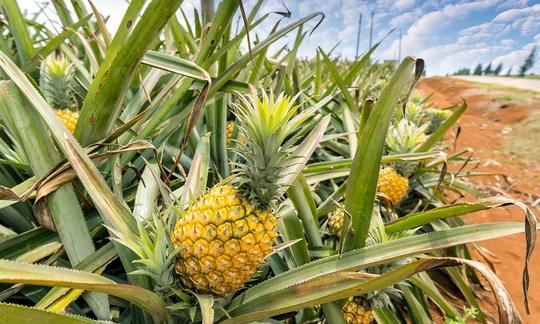

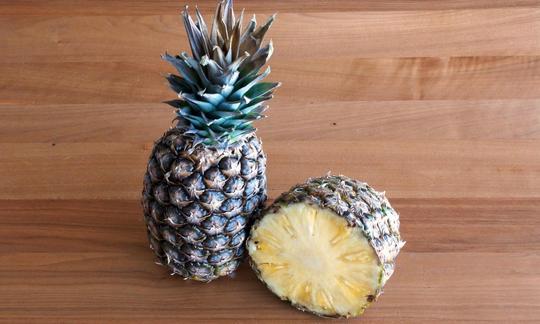

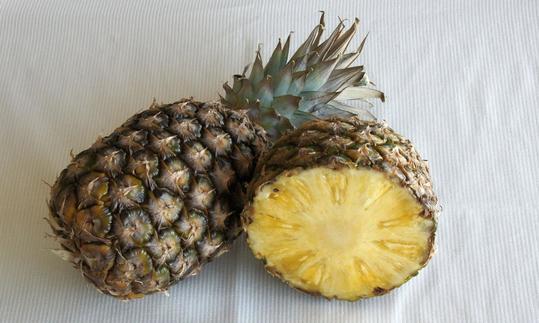

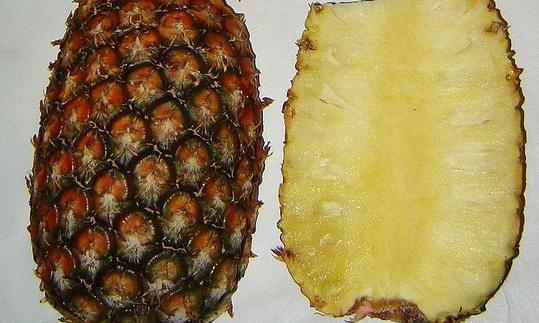

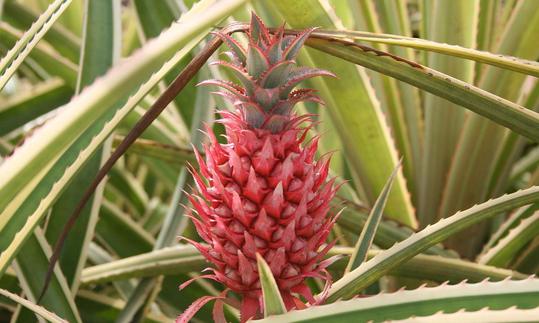

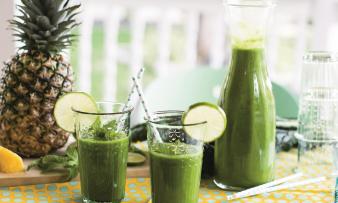

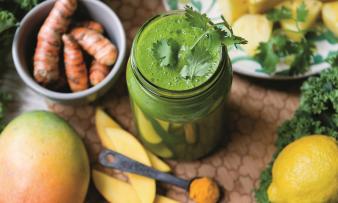





Comments